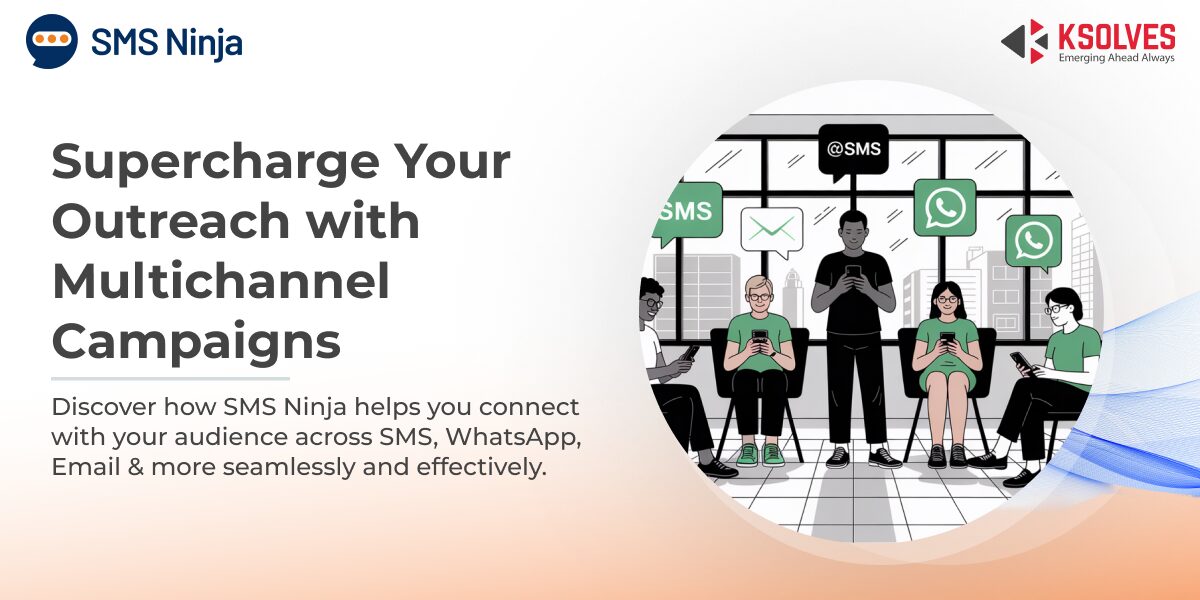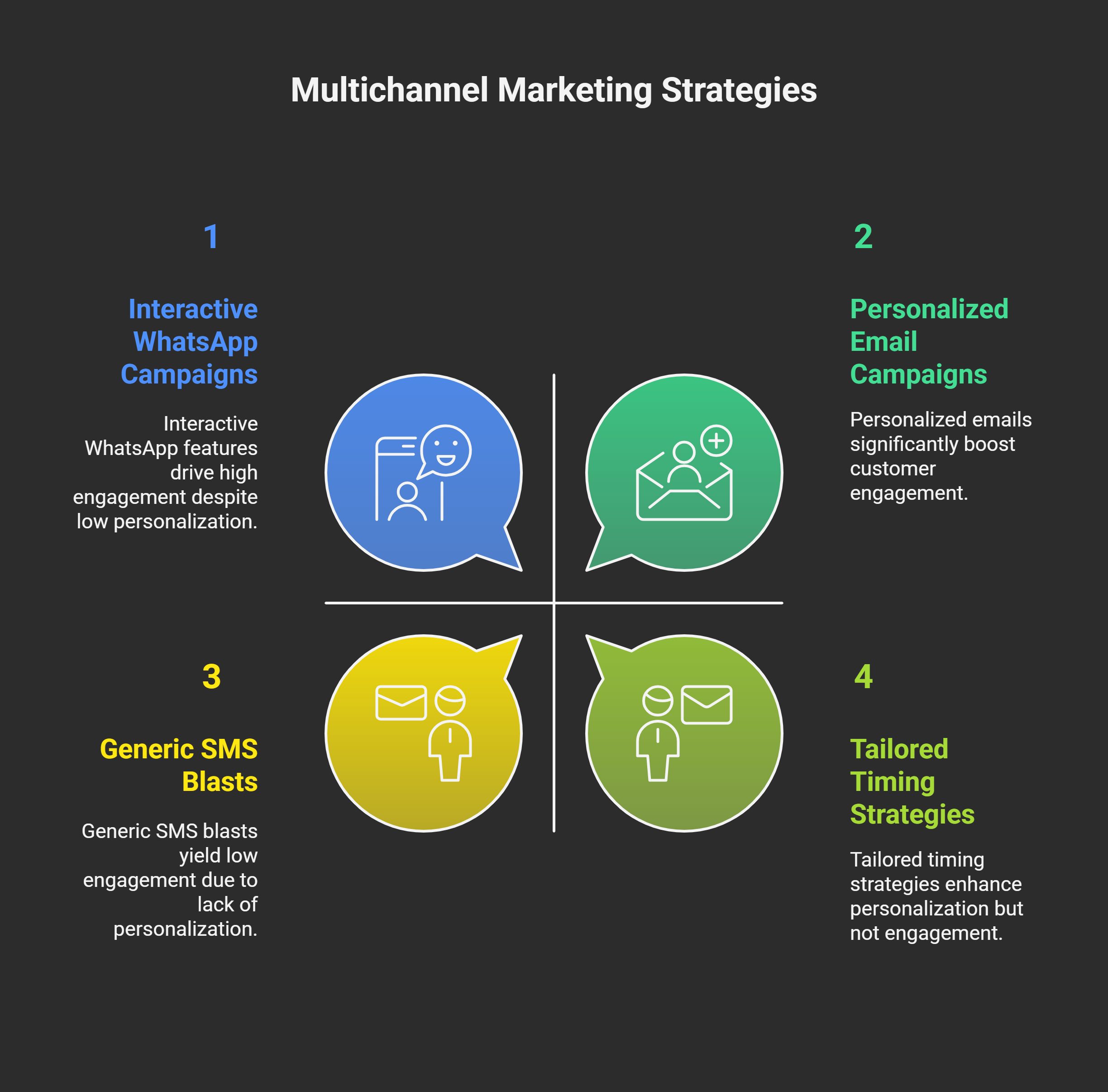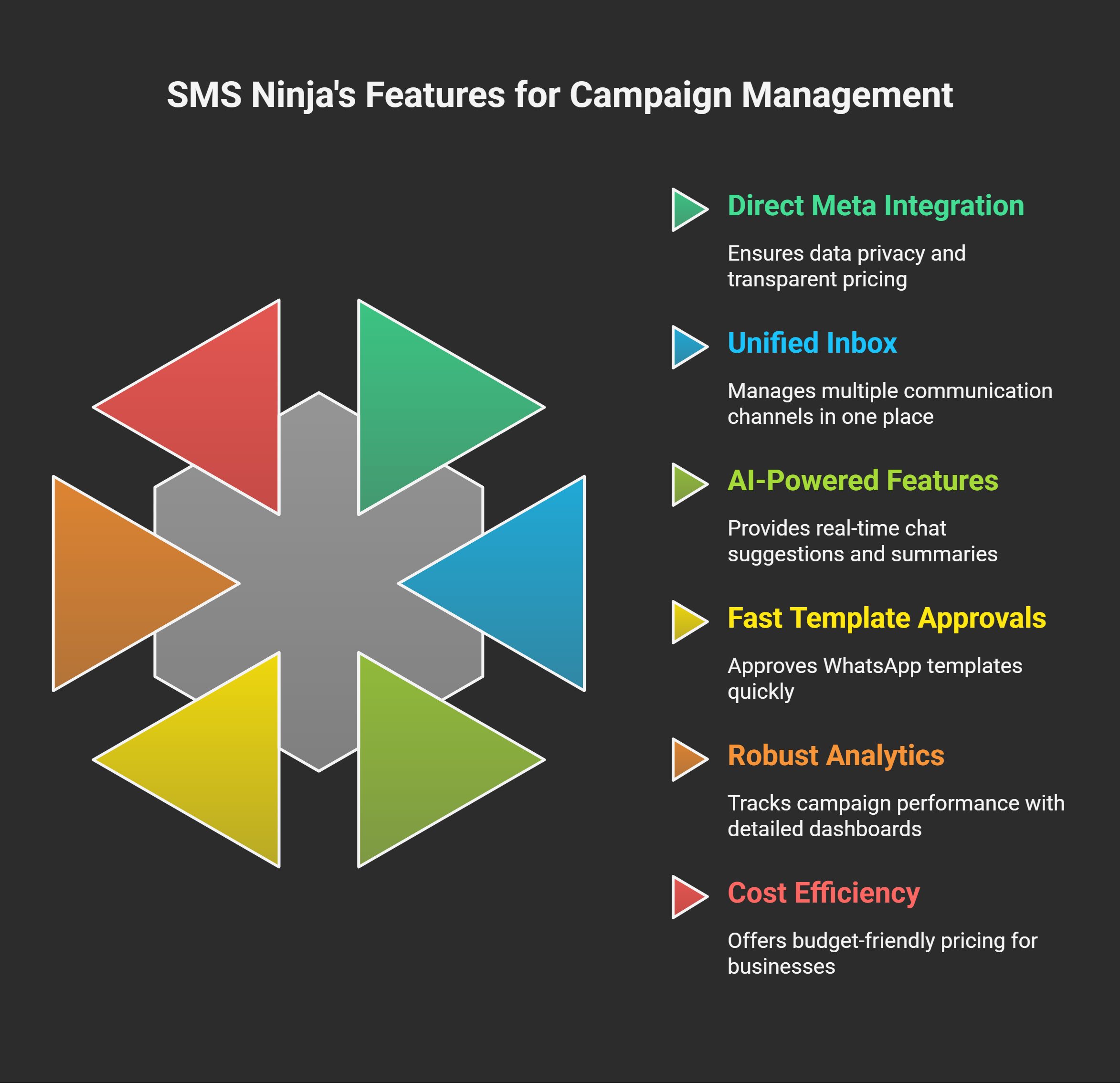In today’s digital era, businesses must connect with customers across multiple platforms to stay competitive. Multichannel campaigns integrate various communication channels such as SMS, WhatsApp, email, and social media to deliver consistent, personalized messages that drive engagement.
These campaigns are critical because customers interact with brands across different touchpoints, with studies showing that campaigns using three or more channels can increase engagement by up to 250% compared to single-channel efforts. This blog provides a comprehensive guide to designing impactful multichannel campaigns within the Salesforce ecosystem, offering actionable steps and insights to maximize reach and results.
Understanding the Power of Multichannel Campaigns
Multichannel campaigns work by meeting customers where they are most active. For instance, SMS boasts a 98% open rate and a 45% response rate, making it ideal for urgent notifications like appointment reminders or payment alerts. WhatsApp, with its 2 billion global users, excels in interactive, conversational engagement through rich media and quick replies. Email remains a staple for detailed, visually rich content, while in-app notifications can re-engage users within mobile apps. By combining these channels, businesses can create a seamless customer journey, reinforcing messages across platforms to improve retention, conversions, and satisfaction.
Key Statistics on Multichannel Campaigns
Data underscores the power of multichannel strategies:
- Higher Engagement: A 2023 Forrester report found that campaigns using three or more channels achieve 250% higher engagement rates than single-channel efforts.
- Improved Retention: Businesses leveraging multichannel campaigns see a 20% increase in customer retention, per a 2024 Salesforce report.
- Response Rates: A 2024 HubSpot study revealed that combining multiple channels increases customer response rates by 90%.
- SMS Effectiveness: SMS has a 98% open rate and 45% response rate, with 90% of messages read within 3 minutes (Source: Gartner, 2023; Twilio, 2023).
- WhatsApp Reach: With 2 billion global users, WhatsApp drives 60% higher engagement for interactive campaigns using rich media and CTAs (Source: Statista, 2024).
- Email ROI: Email generates $42 for every $1 spent, making it ideal for detailed content (Source: DMA, 2023).
- In-App Impact: In-app notifications boost app retention by 25% when paired with other channels (Source: AppsFlyer, 2024).
- Purchase Frequency: A 2023 McKinsey study noted that multichannel campaigns increase purchase frequency by 30% in retail settings.
These statistics highlight why a multichannel approach is critical for maximizing reach and impact.
Step-by-Step Guide to Building a Multichannel Campaign
1. Establish Clear Objectives
Every successful campaign starts with well-defined goals. Are you aiming to boost sales, reduce missed appointments, collect feedback, or enhance customer loyalty? For example, an e-commerce business might focus on promoting limited-time offers, while a healthcare provider might prioritize reducing no-shows. Clear objectives guide channel selection, messaging, and performance metrics.
2. Leverage Audience Segmentation
Segmentation ensures your messages resonate with specific customer groups. Using Salesforce’s CRM, segment audiences based on criteria like purchase history, location, engagement levels, or preferences. For instance, a retail brand might target frequent buyers with exclusive SMS offers while sending email newsletters to new subscribers. Advanced segmentation can also incorporate behavioral data, such as website activity or past campaign responses, to refine targeting.
3. Select the Right Channels
Choose channels based on your audience’s habits and campaign goals:
- SMS: Perfect for concise, time-sensitive messages like order confirmations or payment reminders due to its high open rate.
- WhatsApp: Ideal for interactive engagement with features like buttons, quick replies, and media-rich templates for customer support or promotions.
- Email: Suited for detailed content, such as product updates, newsletters, or post-purchase follow-ups.
- In-App Notifications: Effective for re-engaging users within mobile apps, especially for subscription-based services.
A logistics company, for example, might use SMS for delivery updates, WhatsApp for real-time customer queries, and email for satisfaction surveys.
4. Design Tailored Messages
Craft messages that align with each channel’s strengths:
- SMS: Keep it under 160 characters, use a clear call-to-action (CTA), and personalize with customer names. Example: “Hi [Name], your package arrives today! Track it: [Link].”
- WhatsApp: Incorporate interactive elements like reply buttons or CTAs. Example: “Hi [Name], confirm your slot or reschedule now [Button: Confirm] [Button: Reschedule].”
- Email: Use compelling visuals and detailed content. Example: A promotional email with product images and discount codes.
Ensure consistency in tone and branding across channels to reinforce your message.
5. Automate for Efficiency
Automation streamlines campaign execution and ensures timely delivery. Use Salesforce to schedule messages based on customer time zones or key dates, such as sending payment reminders three days before a due date. Automation tools can also trigger follow-ups based on customer actions, like resending a WhatsApp message if an SMS goes unanswered. This reduces manual effort and improves response rates—studies show automated reminders can reduce no-shows by up to 30%.
6. Monitor and Optimize Performance
Track key metrics like delivery rates, open rates, click-through rates, and conversions to evaluate campaign success. Salesforce’s analytics tools provide insights into which channels and messages perform best. For example, if SMS drives higher click-throughs than email for a promotional campaign, shift budget allocation accordingly. A/B testing different message formats or send times can further refine results, with data showing that optimized campaigns can boost ROI by 20–30%.
7. Prioritize Compliance and Privacy
Compliance with regulations like TCPA (for SMS) and GDPR (for data privacy) is non-negotiable. Obtain explicit customer consent before messaging, provide clear opt-out options, and ensure data security. Avoid third-party servers that may compromise privacy, opting instead for direct integrations that keep data within Salesforce. Non-compliance can lead to fines and damage to brand reputation, so always prioritize ethical practices.
Advanced Strategies for Multichannel Success
- Personalization at Scale: Use dynamic fields in Salesforce to insert customer-specific details, like names or past purchases, into messages. Personalized campaigns can increase engagement by 74%, according to marketing studies.
- Cross-Channel Consistency: Align messaging across channels to create a unified brand experience. For example, an SMS offer should link to an email with the same promotion details.
- Timing Optimization: Analyze customer behavior to determine optimal send times. For instance, B2B customers may respond better to emails during work hours, while B2C customers engage more with SMS in the evening.
- Interactive Features: Leverage WhatsApp’s reply buttons or CTAs to encourage immediate responses, which can increase conversion rates by 20%.
- Feedback Loops: Use post-campaign surveys via email or WhatsApp to gather insights, helping refine future campaigns.
Common Pitfalls to Avoid
- Overloading Customers: Sending too many messages across channels can lead to opt-outs. Limit frequency and ensure each message adds value.
- Ignoring Analytics: Failing to track performance prevents optimization. Regularly review metrics to identify underperforming channels or messages.
- Generic Messaging: Non-personalized messages reduce engagement. Always tailor content to the audience segment.
- Neglecting Compliance: Skipping consent or opt-out options can result in legal issues and customer distrust.
Supercharge Your Campaigns with SMS Ninja
To execute seamless multichannel campaigns, consider SMS Ninja, a powerful Salesforce SMS and WhatsApp integration app developed by Ksolves. SMS Ninja simplifies campaign management with:
- Direct Meta Integration: Ensures data privacy by eliminating third-party servers, unlike competitors, and offers transparent pricing with no per-message fees.
- Unified Inbox: Manage SMS, WhatsApp, and email interactions in one Salesforce-integrated platform, reducing response times by up to 97%.
- AI-Powered Features: Real-time chat suggestions and conversation summaries enable personalized, human-like responses.
- Fast Template Approvals: Create and approve WhatsApp templates in under 5 minutes for quick campaign launches.
- Robust Analytics: Track deliveries, responses, and engagement via an in-app event dashboard to optimize campaigns.
- Cost Efficiency: Pay only Meta’s rates, making it budget-friendly for businesses of all sizes.
Real-world results speak volumes: a beauty and healthcare client using SMS Ninja saw a 65% increase in engagement and a 40% reduction in overdue payments through automated SMS and WhatsApp reminders. Whether you’re in retail, healthcare, logistics, or subscriptions, SMS Ninja empowers you to deliver personalized, compliant, and effective multichannel campaigns.
Ready to elevate your customer engagement? Check out our application SMS Ninja on AppExchange to explore how SMS Ninja can transform your Salesforce communication strategy.


